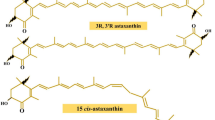Abstract
This study is to examine if Cu2+ can act directly on mitochondria or indirectly by producing reactive oxygen species (ROS), isolated broiler hepatic mitochondria were exposed to different concentrations of Cu2+ (10, 30, 50 μM). Respiratory chain complex activities, ROS generation, respiratory control ratio (RCR) and mitochondrial membrane potential were investigated. Dose-dependent inhibition of respiratory chain complexes and induction of ROS were observed, which coincided with decreasing RCR both with glutamate + malate or succinate. Further investigation indicated that the membrane potential determined by rhodamine 123 release decreased after CuCl2 exposure at 30 and 50 μM. In addition, the effects of the antioxidants NAC (200 μM) and GSH (200 μM) were studied at 50 μM Cu2+. The results indicate that Cu can induce mitochondrial dysfunction in excessive dose and the effect of Cu2+ exposure on respiratory chain is not site-specific, and antioxidants can protect the mitochondrial function by reducing the formation of free radicals.

Similar content being viewed by others
References
Boveris A, Chance B (1973) The mitochondrial generation of hydrogen peroxide. General properties and effect of hyperbaric oxygen. Biochem J 134:707–716
Turrens JF, Alexandre A, Lehninger AL (1985) Ubisemiquinone is the electron donor for superoxide formation by complex III of heart mitochondria. Arch Biochem Biophys 237:408–414
Boveris A, Cadenas E, Stoppani AO (1976) Role of ubiquinone in the mitochondrial generation of hydrogen peroxide. Biochem J 2:435–444
Turrens JF, Boveris A (1980) Generation of superoxide anion by the NADH dehydrogenase of bovine heart mitochondria. Biochem J 191:421–427
Genova ML, Ventura B, Giuliano G, Bovina C, Formiggini G, Parenti Castelli G, Lenaz G (2001) The site of production of superoxide radical in mitochondrial complex I is not a bound ubisemiquinone but presumably iron-sulfur cluster N2. FEBS Lett 505:364–368
Stohs SJ, Bagchi D (1995) Oxidative mechanisms in the toxicity of metal ions. Free Radical Biol Med 32:2–10
Beinert H (1991) Copper in biological system. A report from the 6th Manziana Conference, September 23–27, 1990. J Inorg Biochem 44:173–218
Britton RS (1996) Metal-induced hepatotoxicity. Lipids 16:3–12
Chan PC, Peller OG, Kesner L (1982) Copper(II)-catalyzed lipid peroxidation in liposomes and erythrocyte membranes. Lipids 17:331–337
Al-Nasser IA (2000) Cadmium hepatotoxicity and alterations of the mitochondrial function. Clin Toxicol 38:407–413
Rauen U, Petrat F, Sustmann R, de Groot H (2004) Iron-induced mitochondrial permeabiltiy transition in cultured hepatocytes. J Hepatol 40:607–615
Xiang LX, Shao JZ (2003) Role of intracellular Ca2+, reactive oxygen species, mitochondria transmembrane potential, and antioxidant enzymes in heavy metal-induced apoptosis in fish cells. Bull Environ Contan Toxicol 71:114–122
Pourahmad J, O’Brien PJ (2000) A comparison of hepatocyte cytotoxic mechanisms for Cu2+ and Cd2+. Toxicology 143:263–273
Zhao M, Antunes F, Eaton JW, Brunk UT (2003) Lysosomal enzymes promote mitochondrial oxidant production, cytochrome c release and apoptosis. Eru J Biochem 270:3778–3786
Krumschnabel G, Manzl C, Berger C, Hofer B (2005) Oxidative stress, mitochondrial permeability transition and cell death in Cu-exposed trout hepatocytes. Toxicol Appl Pharmacol 209:62–73
Garcia N, Martinez-Abundis E, Pavon N, Correa F, Chavez E (2007) Copper induces permeability transition through its interaction with the adenine nucleotide translocase. Cell Biol Int 31:893–899
Tang Z, Iqbal M, Cawthon D (2002) Heart and breast muscle mitochondrial dysfunction in pulmonary hypertension syndrome in broilers (Gallus domesticus). Comp Biochem Physiol A 3:527–540
Bradford HF, Dodd RR (1977) Convulsions and activation of epileptic foci induced by monosodium glutamate and related compounds. Biochem Pharmacol 26:253–254
Zhang SR, Fu JL, Zhou ZC (2004) In vitro effect of manganese chloride exposure on reactive oxygen species generation and respiratory chain complex activities of mitochondria isolated from rat brain. Toxicol 18:71–77
Young TA, Cunningham CC, Bailey SM (2002) Reactive oxygen species production by the mitochondrial respiratory chain in isolated rat hepatocytes and liver mitochondria:studies using myxothiazol. Arch Biochem Biophys 405:65–72
Emaus RK, Grunwald R, Lemaster JJ (1986) Rhodamine 123 as a probe of transmembrane potential in isolated rat-liver mitochondria:spectral and metabolic properties. Biochem Biophys Acta 850:436–448
Arciello M, Rotilio G, Rossi L (2005) Copper-dependent toxicity in SH-SY5Y neuroblastoma cells involves mitochondrial damage. Biochem Biophys Res Commun 327:454–459
Freeman BA, Crapo JD (1982) Biology of disease-free radicals and tissue injury. Lab Invest 47:412–426
Raha S, Robinson BH (2001) Mitochondria, oxygen free radicals, and apoptosis. Am J Med Genet 106:62–70
Belyaeva EA, Glazunov VV, Korotkov SM (2004) Cd2+-promoted mitochondrial permeability transition: a comparison with other heavy metals. Acta Biochem Pol 51:545–551
Prohaska JR, Bailey WR, Lear PM (1995) Copper deficiency alters rat peptidylglycine α-amidating monooxygenase activity. J Nutr 125:1447–1454
Hawk SN, Lanoue L, Keen CL, Kwik-Uribe CL, Rucker RB, Uriu-Adams JY (2003) Copper deficient rat embryos are characterized by low superoxide dismutase activity and elevated superoxide anions. Biol Reprod 68:896–903
Lynch SM, Frei B, Morrow JD, Robert LJ, Xu A, Jackson T, Reyna R, Klevay LM, Vita JA, Keaney JF (1997) Vascular superoxide dismutase deficiency impairs endothelial vasodilator function through direct inactivation of nitric oxide and increased lipid peroxidation. Arterioscler Thromb Vasc Biol 17:2975–2981
Halliwell B, Gutteridge JM (1992) Biologically relevant metal ion-dependent hydroxyl radical generation. update FEBS Lett 307:108–112
Saris NE, Skulskii IA (1991) Interaction of Cu+ with mitochondria. Acta Chem Scand 45:1042–1046
Sokol RJ, Devereaux MW, O’Brien K, Khandwala RA, Loehr JP (1993) Abnormal hepatic mitochondrial respiration and cytochrome c oxidase activity in rats with long-term copper overload. Gastroenterology 105:178–187
Acknowledgments
This work was supported by the National Natural Science Foundation of China (grant NO. 30871900).
Author information
Authors and Affiliations
Corresponding author
Additional information
Rongsheng Su, Rongmei Wang, Shining Guo and Huabin Cao contributed equally to this work.
Rights and permissions
About this article
Cite this article
Su, R., Wang, R., Guo, S. et al. In Vitro Effect of Copper Chloride Exposure on Reactive Oxygen Species Generation and Respiratory Chain Complex Activities of Mitochondria Isolated from Broiler Liver. Biol Trace Elem Res 144, 668–677 (2011). https://doi.org/10.1007/s12011-011-9039-4
Received:
Accepted:
Published:
Issue Date:
DOI: https://doi.org/10.1007/s12011-011-9039-4




